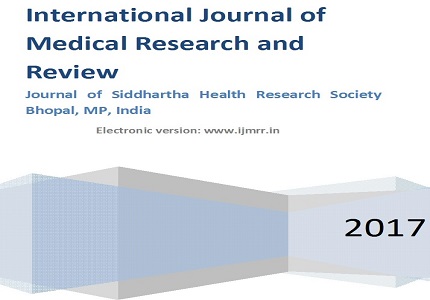Assessing effectiveness of telemedicine intervention for creating awareness of pain education in rural areas of Central India
Abstract
Introduction: Pain and palliative care is a growing need of the current healthcare system. This is because of the changing trends of disease related morbidity and mortality from acute communicable disease to chronic non communicable diseases. Development and easy availability of telecommunication mediums may be useful for creating awareness of pain and palliative care education in rural Indian setting.
Material and Method: We tried to assess effectiveness of telemedicine intervention for creating awareness of pain education in rural area of Central India. Total of five villages were connected through high speed broadband services to a tertiary care centre (LN Medical College Bhopal). This medical college acted as a nodal centre for the peripheral rural areas for providing telemedicine intervention.
Results: Telemedicine appears to be an effective and acceptable mode of creating awareness of pain and palliative care in rural population of Central India.
Conclusion: Telemedicine interventions may be able to bridge the gap between rural and urban part of Central India and may prove to be useful in low resource setting.
Downloads
References
World Health Organization: In Palliative care: the solid facts. Edited by: Davies E, Higginson IJ. Copenhagen, Denmark; 2004.
Murray SA, Kendall M, Boyd K, Sheikh A: Illness trajectories and palliative care. BMJ 2005, 330:1007-1011.
Shugarman LR, Decker SL, Bercovitz A: Demographic and social characteristics and spending at the end of life. J Pain Symptom Manage 2009, 38:15-26.
World Health Organization. Cancer pain relief and palliative care. Geneva: WHO;2002.
The Global Burden of Disease: 2004 update. World Health Organisation 2008, Geneva. Available from: http://www.who.int/healthinfo/global_burden_disease/estimates_country/en/index.htm. [Last cited 2012 Jul 28].
Marengoni A, et al. Aging with multi-morbidity: a systematic review of the literature. Ageing Res Rev. 2011;10(4):430–9.
Vellas BJ, Albarede JL, Garry PJ. Diseases and aging: patterns of morbidity with age; relationship between aging and age-associated diseases. Am J Clin Nutr. 1992;55(6):1225S–30S.
Gavazzi G, Herrmann F, Krause KH. Aging and infectious diseases in the developing world. Clin Infect Dis. 2004;39(1):83–91.
Patel V, Prince M. Ageing and mental health in a developing country: who cares? Qualitative studies from Goa, India. Psychol Med. 2001;31(01):29–38.
Mathers CD, Sadana R, Salomon JA, Murray CJ, Lopez AD. Healthy life expectancy in 191 countries, 1999. Lancet 2001;357:1685-1691.
World Health Organization. The global burden of disease; 2004 [cited 2016 Dec 25]. Available from: http://www.who.int/healthinfo/global_burden_disease/2004_report_update/en/.
Murray CJ, Lopez AD. The global burden of disease: a comprehensive assessment of mortality and disability from diseases, injuries, and risk factors in 1990 and projected to 2020; 1997 [cited 2016 Dec 25]. Available from: http://apps.who.int/iris/bitstream/10665/41864/1/096 5546608_engpdf.
Anand S. Measuring health workforce inequalities: Methods and application to China and India. Human Resources for Health Observer, Issue No. 5. Geneva:WHO; 2010. Available at http://whqlibdoc.who.int/publications/2010/9789241500227_eng.pdf (accessed on 25 Sep 2013).
Anand S, Fan V. The Health Workforce in India. Human Resources for Health Observer Series. No 16. World Health Organization 2016. Available at http://www.who.int (accessed on 13 Nov 2016).
Chen L, Evans T, Anand S, Boufford JI, Brown H, Chowdhury M, et al. Human resources for health: Overcoming the crisis. The Lancet 2004;364:1984–90.
Sood S P, Bhatia J S. Development of telemedicine technology in India: ''Sanjeevani''-An integrated telemedicine application. J Postgrad Med 2005;51:308-11.
Pednekar MS, Gupta R, Gupta PC. Illiteracy, low educational status, and cardiovascular mortality in India. BMC Public Health 2011;11: 567.
Rao KD, Bhatnagar A, Murphy A. Socio-economic inequalities in the financing of cardiovascular & diabetes inpatient treatment in India. Indian J Med Res 2011;133:57-63.
Gupta R, Gupta VP, Ahluwalia NS. Educational status, coronary heart disease, and coronary risk factor prevalence in a rural population of India. BMJ 1994;309:1332-1336.



 OAI - Open Archives Initiative
OAI - Open Archives Initiative


